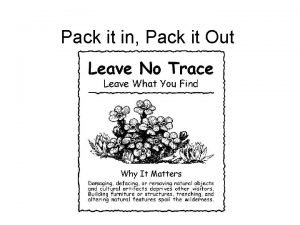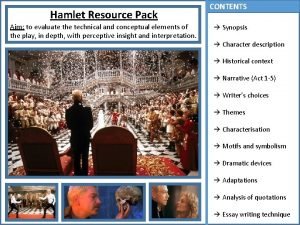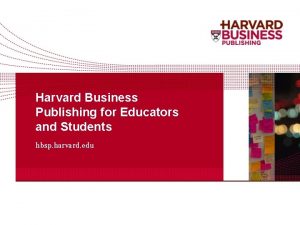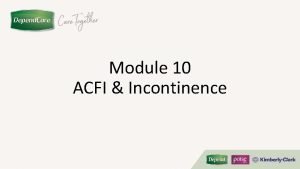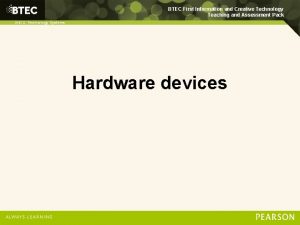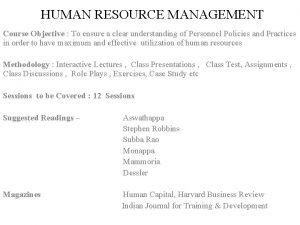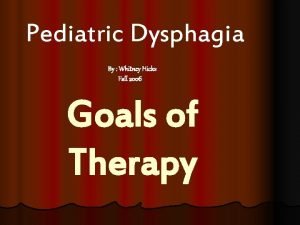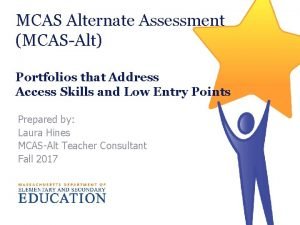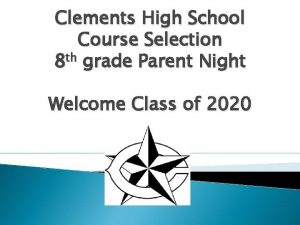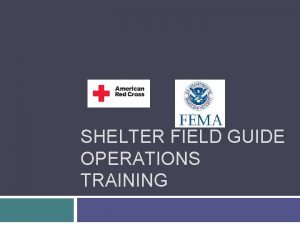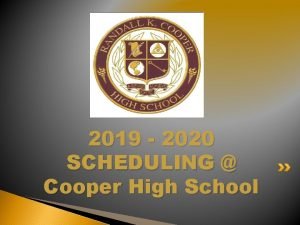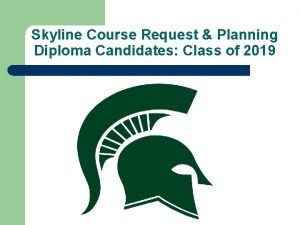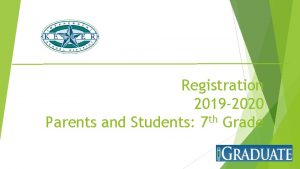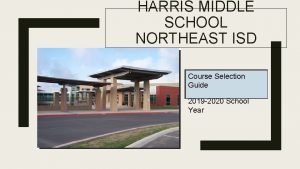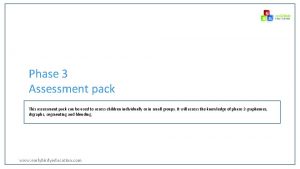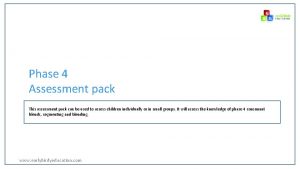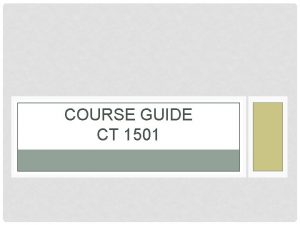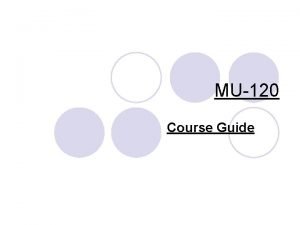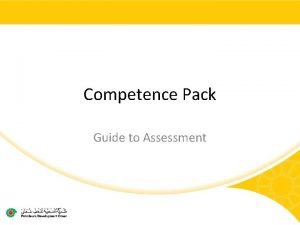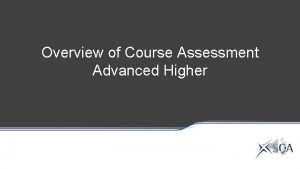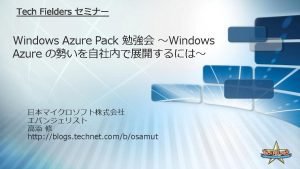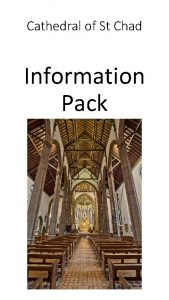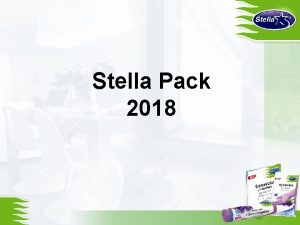Unit 3 Resource Pack Course Guide Assessment for

































































- Slides: 65

Unit 3 – Resource Pack

Course Guide - Assessment for Unit 3 Outcome 1 – Analyse a selected solo dance works – Title: Newspaper Dance Choreographer: Gene Kelly Title: Smoke Choreographer: Mats Ek Outcome 2 – On completion of this unit the student should be able to choreograph, rehearse and perform a solo dance work and analyse the processes and practices used. Outcome 3 - On completion of this unit the student should be able to learn, rehearse and perform a group dance work created by another choreographer and analyse the processes and practices used. End of year performance examination: 50% of grade End of year written examination: 25% of grade

Terminology for revision: Expressive Intention – the idea or story Cultural Influences – (background, era, dance training) Form - (narrative (ABC), Binary (AB), ternary (ABA), episodic etc. ) Unified composition - (sections (beginning, development and resolution ABC), phrases and motif) Body Actions – (GLEFTS) Physical Skills – (BFACTS) Technical Skills – (Safe dance) Personal movement vocabulary Elements of Movement – Time, Space and Energy (Qualities of Movement & Laban effort actions) Group Structures – (Symmetry, asymmetry, unison, canon, contrast) Spatial Organisation – (direction, level, eye/body focus, dimension) Spatial Arrangement – how you set up / refine movement in terms of phrases / sequences / sections Spatial Orientation – (awareness of you and others in space) Choreographic Devices – (RAASSA DIET) Technical and Production Aspects – Lighting, Sound, Costumes, Projection etc. Dance Design – E. I, M. V & Form Choreographic Principles - (unified composition, spatial organistion , group structures, EOM, E. I) Movement Creation process - (ISARE) Dance making-process – (ISARE, rehearsal, pre-performance, performance) Learnt work processes – (learning , rehearsal, pre-performance, performance) (learning processes = imitation, memorization, repetition Choreographic Processes = Brainstorming ideas, creating shapes with the body, using the mirror, using EOM, BA, PS (rehearsing processes = movement memory, refine technique, refine EOM, seek feedback etc. (Pre-performance processes = warm-up /down, mental prep, visualisation, walk through space etc. ) (Performance processes = (projection, dynamics, posture, strength etc. )

Technique Solo assessment Criteria 1. control of body alignment and coordination of body parts within a range of body actions 2. maintenance of stamina and control of muscular strength within a range of body actions 3. control in the use of transference of weight and balance within a range of body actions 4. control in the use of flexibility within a range of body actions 5. skill in the varied use of time 6. skill in the varied use of space (shape) 7. skill in the varied use of energy 8. skill in projection of the whole body to demonstrate artistry and communicate to the audience

Technique solo – Mind Map

Technique Solo– E. I General expressive Intention: Song(s) selected: Style selected:

Technique solo – M. V – first section Criteria 1– 4 require students to demonstrate control of physical skills within a range of body actions. In the VCE Dance Study Design, physical skills are movement skills including alignment, coordination, balance, control, flexibility, strength, stamina and transference of weight. Body actions include elevation, falling, gesture, locomotion, turning and stillness. Body Actions Physical Skills


Technique solo – E. M – first section Criteria 5– 7 require students to demonstrate skill in the varied use of each of the elements of movement; namely, time, space (shape) and energy. Time Space (Shape) Energy


Technique solo – Artistry – first section Criterion 8 requires students to demonstrate skill in projection of the whole body, including transitions between phrases and sections, and use of eye line to communicate an artistic and expressive execution of the movement. Eye line Body Projection


Technique solo – M. V – first section Criteria 1– 4 require students to demonstrate control of physical skills within a range of body actions. In the VCE Dance Study Design, physical skills are movement skills including alignment, coordination, balance, control, flexibility, strength, stamina and transference of weight. Body actions include elevation, falling, gesture, locomotion, turning and stillness. Body Actions Physical Skills


Technique solo – E. M – second section Criteria 5– 7 require students to demonstrate skill in the varied use of each of the elements of movement; namely, time, space (shape) and energy. Time Space (Shape) Energy


Technique solo – Artistry – second section Criterion 8 requires students to demonstrate skill in projection of the whole body, including transitions between phrases and sections, and use of eye line to communicate an artistic and expressive execution of the movement. Eye line Body Projection


Technique solo – M. V – third section Criteria 1– 4 require students to demonstrate control of physical skills within a range of body actions. In the VCE Dance Study Design, physical skills are movement skills including alignment, coordination, balance, control, flexibility, strength, stamina and transference of weight. Body actions include elevation, falling, gesture, locomotion, turning and stillness. Body Actions Physical Skills


Technique solo – E. M – third section Criteria 5– 7 require students to demonstrate skill in the varied use of each of the elements of movement; namely, time, space (shape) and energy. Time Space (Shape) Energy


Technique solo – Artistry – third section Criterion 8 requires students to demonstrate skill in projection of the whole body, including transitions between phrases and sections, and use of eye line to communicate an artistic and expressive execution of the movement. Eye line Body Projection


Technique solo – Dance design Describe with examples the dance design of your solo: (E. I, M. V & Form)

Dance making process – Choreographing processes Movement creation process: Improvisation: Selection: Arrangement: Refinement: Evaluation:

Dance making process – Choreographing processes Other Choreographic processes: Brainstorming of ideas – Trying out different music – Using the mirror to create shapes – Experimenting with EOM – Experimenting with BA & PS – Selection of an EI – Using the Choreographic Devices – Using formal structures -

Dance making process – Rehearsing processes Practice / develop movement memory: Feedback: Refine (spatial accuracy, SAFE Dance, floor pathways, EOM): Video: Progress showing

Dance making process – pre-performance process Warming up: Nutrition: Marking out the space: Mental preparation: Visualisation:

Dance making process – performance processes Projection: Focus: Musicality: Safe dance / technical skills: Energy / dynamics:

Technique solo – technical skills After speaking to your teaching and reviewing your solo, what technical skills and/or performance skills do you need to refine before your exam?

Technique solo: practice questions: 1: When choreographing your Unit 3 solo (technique solo) you used the five movement creation processes. Identify and discuss how you used two of these movement creation processes. 2: Pick a phrase from your solo. a. Describe the phrase in detail. b. Discuss how you used two Body Actions in that phrase. c. Discuss how you used two Physical Skills in that phrase. 3: List three physical skills. For each one of these three skills outline one way that it can be safely developed by a dancer. 4: Select two of the solo dance works listed above and refer to both of these when answering Question 3. Complete Table 1 by referring to one of the solo dance works selected. Complete Table 2 by referring to the other solo dance work selected. In each table, describe examples of movement vocabulary that demonstrate the choreographer’s(s’) use of each choreographic device listed. Do not use the same example of movement vocabulary twice Choreographic device 1. Abstraction 2. Repetition Example of movement vocabulary Example 1 Example 2 5: When choreographing your Unit 4 solo (Composition solo) you used the structure of a unified composition. a. List the parts that form the structure of a unified composition. b. Briefly explain how the expressive intention in your Unit 4 solo created a unified composition. 6: Describe how you manipulated the Element of movement Space in regards to the form of your compositional solo. Discuss with regards to 3 different examples of that EOM.

Newspaper Dance

Prescribed Work – Newspaper Dance Joe (Gene Kelly) is a thirty-something year old still trying to make the big time. He’s in charge of a summer stock that’s without a location for its upcoming revue. His snotty fiancé-to-be, played by Gloria Dehaven, offers her spinster sister’s barn which will provide adequate space. Dehaven’s sister is portrayed by Garland who discovers that her true calling may lie in the stage, and not in agriculture. It’s also determined through a series of songs and shenanigans that Garland would make a much better fiancé for Kelly. After romancing his co-star in a barn, Kelly’s character, in high spirits, is left alone to dream of his ladylove. To the tune of “You, Wonderful You” (which Garland sang earlier in the film), Kelly conveys his emotions through the medium he knows best: dance. He performs a series of twirls intricate enough to divide his sole dance partner, a dated newspaper, into fours. His tapping is the signature Kelly style: crisp and close to the ground while maintaining that athleticism he is still noted for today. He dons typical Kelly garb: simple polo shirt, loose pants (always too short) revealing a pair of white socks, and loafers. He is dashing, especially when he flashes that winning Irish smile. Oh, why can’t they make them like they used to?

Prescribed Work – Newspaper Dance: Expressive Intention

Form: Narrative ABC

Prescribed Work – Newspaper Dance Cultural Influence Background of the era: Gene Kelly’s life: Gene Kelly’s dance training:

BODY ACTIONS:

Body Actions - Gesture Section A Example of movement: Link to expressive intention: Section B Section C

Body Actions - Locomotion Section A Example of movement: Link to expressive intention: Section B Section C

Body Actions - Elevation Section A Example of movement: Link to expressive intention: Section B Section C

Body Actions - Falling Section A Example of movement: Link to expressive intention: Section B Section C

Body Actions - Turning Section A Example of movement: Link to expressive intention: Section B Section C

Body Actions - Stillness Section A Example of movement: Link to expressive intention: Section B Section C

Physical Skills

Physical Skills - Balance Section A Example of movement: Link to expressive intention: Section B Section C

Physical Skills - Flexibility Section A Example of movement: Link to expressive intention: Section B Section C

Physical skills - Alignment Section A Example of movement: Link to expressive intention: Section B Section C

Physical Skills – Coordination / control Section A Example of movement: Link to expressive intention: Section B Section C

Physical Skills – Transference of weight Section A Example of movement: Link to expressive intention: Section B Section C

Physical Skills - Stamina Section A Example of movement: Link to expressive intention: Section B Section C

Elements of Movement

Element of Movement – Time (Accent) Section A Example of movement: Link to expressive intention: Section B Section C

Element of Movement - Time Section A Example of movement: Link to expressive intention: Section B Section C

Element of Movement – Space Section A Example of movement: Link to expressive intention: Section B Section C

Element of Movement – Energy Section A Example of movement: Link to expressive intention: Section B Section C

Qualities of Movement Section A Example of movement: Link to expressive intention: Section B Section C

Choreographic Devices

Choreographic Devices Section A Example of movement: Link to expressive intention: Section B Section C

Choreographic Devices Section A Example of movement: Link to expressive intention: Section B Section C

Dance Design

Dance Design Section A Section B Section C Expressive Intention: Movement Vocabulary: How they link:

Production Aspects

Production Aspects Section A Section B Section C Lighting: Sound: Costumes:

Prescribed work – practice questions 1: Describe the Expressive intention of the ‘Newspaper Dance’ in terms of the formal structure of the piece. 2: Discuss how one cultural influence has impacted the movement vocabulary and the expressive intention of the ‘Newspaper Dance’. 3: Pick one Body Action and discuss how it has been manipulated to explore the expressive intention of the piece for each section. 4: Describe the Dance design of the ‘Newspaper Dance’. 5: Discuss how one cultural influence has impacted on one production aspect in the ‘Newspaper Dance’.
 Pack it out pack it in
Pack it out pack it in Gothic resource pack
Gothic resource pack Hbsp for educators
Hbsp for educators Acfi assessment pack
Acfi assessment pack Btec level 2 information and creative technology
Btec level 2 information and creative technology Resource leveling is the approach to even out the peaks of
Resource leveling is the approach to even out the peaks of Perbedaan antara resource loading dan resource levelling
Perbedaan antara resource loading dan resource levelling Human resource management course objectives
Human resource management course objectives Disadvantages of cavity wall
Disadvantages of cavity wall Course title and course number
Course title and course number Course interne course externe
Course interne course externe Pediatric dysphagia resource guide
Pediatric dysphagia resource guide Resource management guide 203
Resource management guide 203 Mcas alternate assessment
Mcas alternate assessment Unit 10, unit 10 review tests, unit 10 general test
Unit 10, unit 10 review tests, unit 10 general test Waukee course guide
Waukee course guide Nisd course selection guide
Nisd course selection guide Jenks course planning guide
Jenks course planning guide Clements high school course selection 2020-2021
Clements high school course selection 2020-2021 Unionville high school principal
Unionville high school principal Shelter field guide course
Shelter field guide course Cooper high school course guide
Cooper high school course guide Skyline high school course guide
Skyline high school course guide Keller isd course guide
Keller isd course guide Northwest isd course selection guide
Northwest isd course selection guide Kontinuitetshantering i praktiken
Kontinuitetshantering i praktiken Typiska drag för en novell
Typiska drag för en novell Nationell inriktning för artificiell intelligens
Nationell inriktning för artificiell intelligens Vad står k.r.å.k.a.n för
Vad står k.r.å.k.a.n för Varför kallas perioden 1918-1939 för mellankrigstiden
Varför kallas perioden 1918-1939 för mellankrigstiden En lathund för arbete med kontinuitetshantering
En lathund för arbete med kontinuitetshantering Adressändring ideell förening
Adressändring ideell förening Personlig tidbok för yrkesförare
Personlig tidbok för yrkesförare Sura för anatom
Sura för anatom Förklara densitet för barn
Förklara densitet för barn Datorkunskap för nybörjare
Datorkunskap för nybörjare Stig kerman
Stig kerman Hur skriver man en tes
Hur skriver man en tes För och nackdelar med firo
För och nackdelar med firo Nyckelkompetenser för livslångt lärande
Nyckelkompetenser för livslångt lärande Påbyggnader för flakfordon
Påbyggnader för flakfordon Tryck formel
Tryck formel Publik sektor
Publik sektor Kyssande vind
Kyssande vind Presentera för publik crossboss
Presentera för publik crossboss Teckenspråk minoritetsspråk argument
Teckenspråk minoritetsspråk argument Plats för toran ark
Plats för toran ark Treserva lathund
Treserva lathund Fimbrietratt
Fimbrietratt Claes martinsson
Claes martinsson Centrum för kunskap och säkerhet
Centrum för kunskap och säkerhet Programskede byggprocessen
Programskede byggprocessen Mat för unga idrottare
Mat för unga idrottare Verktyg för automatisering av utbetalningar
Verktyg för automatisering av utbetalningar Rutin för avvikelsehantering
Rutin för avvikelsehantering Smärtskolan kunskap för livet
Smärtskolan kunskap för livet Ministerstyre för och nackdelar
Ministerstyre för och nackdelar Tack för att ni har lyssnat
Tack för att ni har lyssnat Hur ser ett referat ut
Hur ser ett referat ut Redogör för vad psykologi är
Redogör för vad psykologi är Stål för stötfångarsystem
Stål för stötfångarsystem Atmosfr
Atmosfr Borra hål för knoppar
Borra hål för knoppar Vilken grundregel finns det för tronföljden i sverige?
Vilken grundregel finns det för tronföljden i sverige? Formula varians
Formula varians Tack för att ni har lyssnat
Tack för att ni har lyssnat
